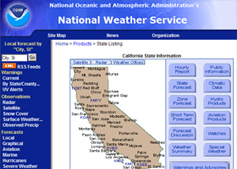 Heat Illness Prevention
Heat Illness Prevention 
Monitor Weather Conditions Elements of Your Written Program and Effective Work Practices
What is in T8CCR 3395?
T8CCR 3395(b) Definitions defines “Temperature” as the following:
“Temperature” means the dry bulb temperature in degrees Fahrenheit
obtainable by using a thermometer to measure the outdoor temperature in an
area where there is no shade. While the temperature measurement must be
taken in an area with full sunlight, the bulb or sensor of the thermometer
should be shielded while taking the measurement, e.g., with the hand or some
other object, from direct contact by sunlight.
T8CCR 3395(h)(2)(D) states the following:
(2) Supervisor training. Prior to supervising employees performing work that
should reasonably be anticipated to result in exposure to the risk of heat
illness effective training on the following topics shall be provided to the
supervisor:
(D) How to monitor weather reports and how to respond to hot weather
advisories.
Guidance, Best Practices and Warnings
As temperatures increase and other environmental factors change throughout the workday, employees' physical and mental state can also rapidly change into a serious medical condition. Therefore, it is important to stay alert to the weather.
Employers should monitor predicted weather temperatures in advance (for example, by television or radio or on the Internet) to know when the temperature will probably exceed 80 degrees. Employers are expected to know if the temperature is in fact exceeding 80 degrees at the worksite. Employers need to monitor the weather as frequently as needed since weather conditions may change quickly at times.
Also, note that you are required to provide training to the supervisors on how to monitor weather.
Best Practices
Check Weather Forecasts
Make sure to monitor the weather at the specific locations where work activities are occurring. Prior to each workday, have a designated person check the weather forecast in the areas of work activities. The weather can be monitored by using local radio and television stations, websites, and electronic or other devices. Some sources to monitor the weather include the:
- National Weather Service Phone Numbers CALIFORNIA Dial-A-Forecast
- Eureka 707-443-7062
- Hanford 559-584-8047
- Los Angeles 805-988-6610(#1)
- Sacramento 916-979-3038
- San Diego 858-297-2107(#1)
- San Francisco 831-656-1725(#1)
- Weather Channel TV Network
- Websites such as:
View extended weather forecasts in order to plan in advance work schedules, know whether high heat is expected and if work activity and schedule modifications will be necessary. This type of advance planning should take place all summer long.
Measure the Temperature at Worksites
Have a supervisor or designated person at each worksite use thermometers to measure the temperature every 60 minutes throughout the workday.
Use this real time site specific weather information to make the appropriate adjustments in work schedules and activities throughout workdays which may include (but are not limited to):
- setting up shade
- stopping work early
- rescheduling job tasks
- working at night or during the cooler hours of the day
- increasing the number of water and rest breaks
- implementing High Heat Procedures
Continue to stay updated throughout the work shift on the changing air temperatures and other environmental factors (see Environmental Risk Factors) at work locations.
August 2023


